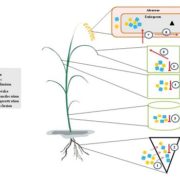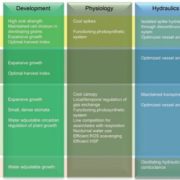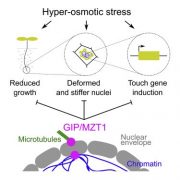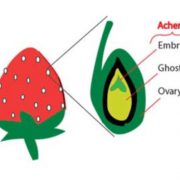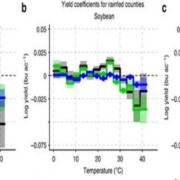Apple Hexokinase Mediates Response to Salinity Stress
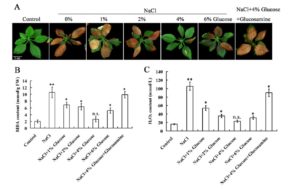 Abiotic stresses such as drought, salinity, low temperature, and flooding usually lead to sugar accumulation. It has been reported that the accumulation of Glc, Suc, and Fru under high salinity plays an important role in carbon storage, osmotic regulation, and homeostasis, as well as scavenging of free radicals. However, the molecular mechanism by which Glc acts as a signal to regulate salinity tolerance remains unclear. Sun et al. (10.1104/pp.17.01472) report that exogenous Glc application improved salt tolerance in apple (Malus domestica) and that the Glc sensor hexokinase1 (MdHXK1) contributes to Glc-mediated salinity tolerance. Furthermore, the authors found that a tonoplast-localized Na+/H+ exchanger MdNHX1 interacted with MdHXK1 and acted as its phosphorylation target. Phosphorylation improved the stability of MdNHX1 and enhanced its Na+/H+ transport activity in MdNHX1 overexpression transgenic apple and yeast complementation cells.
Abiotic stresses such as drought, salinity, low temperature, and flooding usually lead to sugar accumulation. It has been reported that the accumulation of Glc, Suc, and Fru under high salinity plays an important role in carbon storage, osmotic regulation, and homeostasis, as well as scavenging of free radicals. However, the molecular mechanism by which Glc acts as a signal to regulate salinity tolerance remains unclear. Sun et al. (10.1104/pp.17.01472) report that exogenous Glc application improved salt tolerance in apple (Malus domestica) and that the Glc sensor hexokinase1 (MdHXK1) contributes to Glc-mediated salinity tolerance. Furthermore, the authors found that a tonoplast-localized Na+/H+ exchanger MdNHX1 interacted with MdHXK1 and acted as its phosphorylation target. Phosphorylation improved the stability of MdNHX1 and enhanced its Na+/H+ transport activity in MdNHX1 overexpression transgenic apple and yeast complementation cells.


